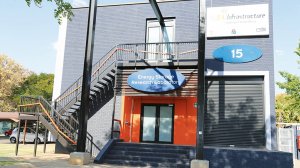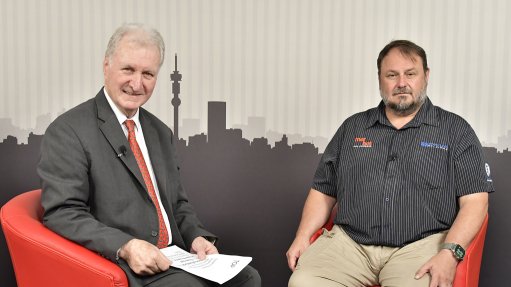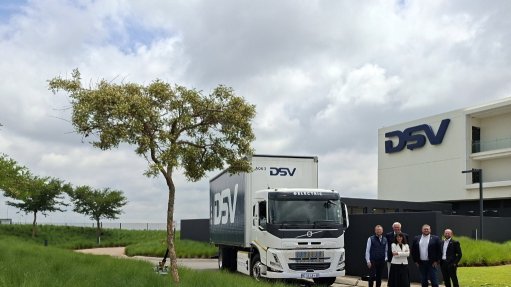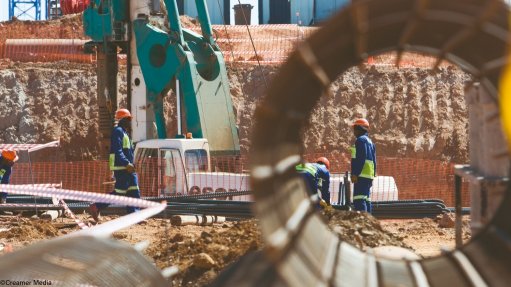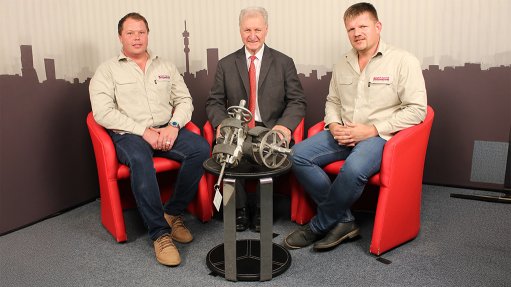South Africa’s hydrogen fuel cell programme making steady progress



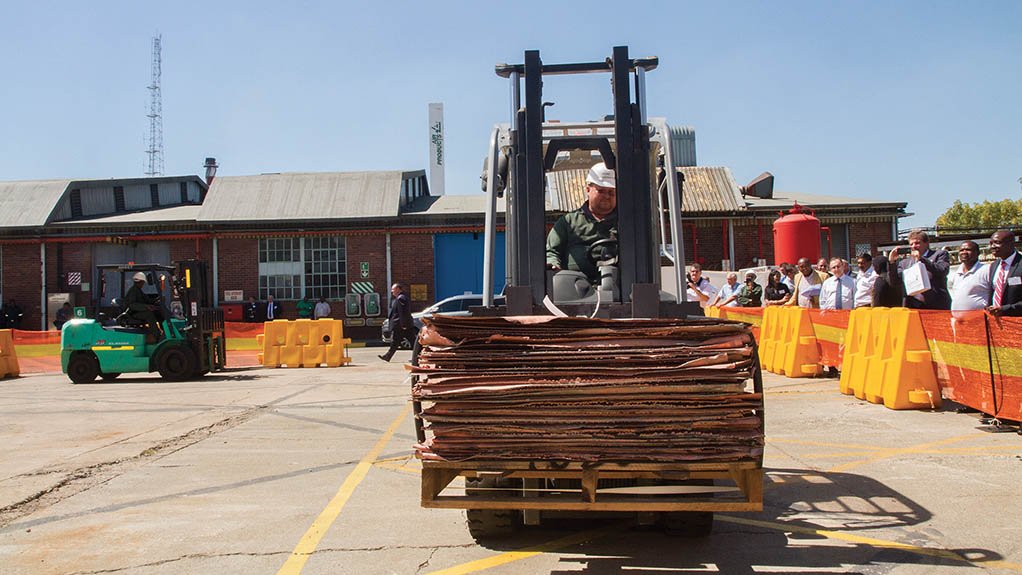
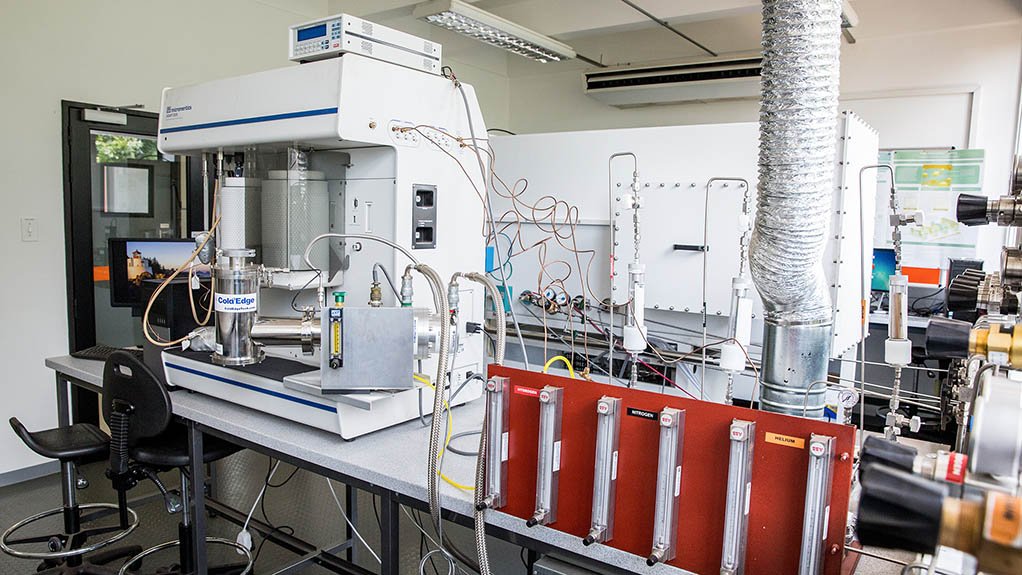
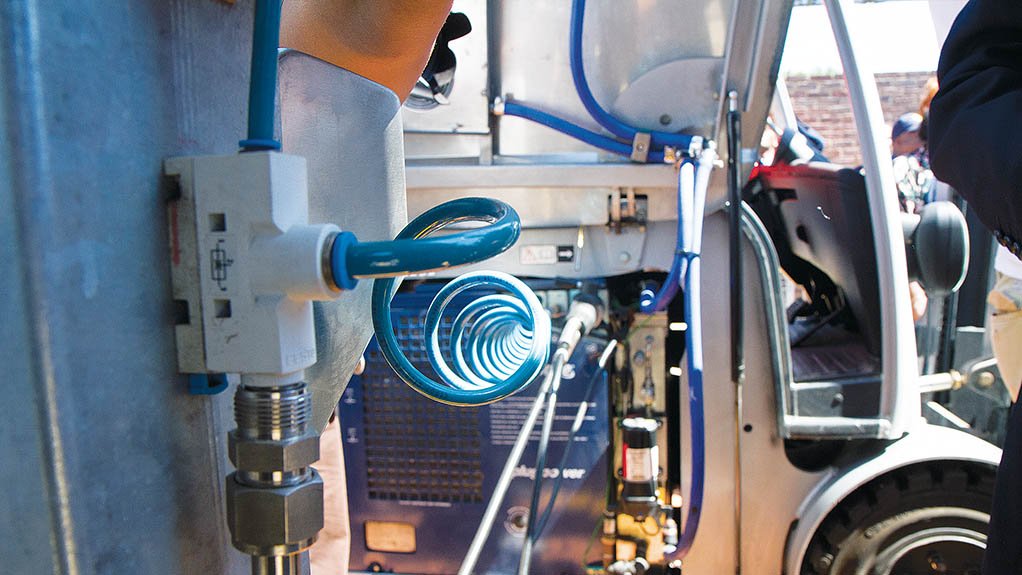
CENTRE OF EXCELLENCE The HySA Infrastructure facility at the CSIR, in Pretoria
Photo by CSIR
SUCCESS The hydrogen fuel cell powered forklift developed by HySA Systems in action
Photo by Duane Daws
RESEARCH One of the laboratories at HySA Infrastructure
Photo by CSIR
SUPPLY: The hydrogen station at Impala Platinum refuels the fuel cell forklift
The Department of Science and Tech- nology (DST) is pleased with the progress being made by the Hydrogen South Africa (HySA) research, development and innovation (RDI) programme. This is a natural resources beneficiation project aimed at increasing the market for the country’s platinum reserves by helping stimulate the development and global adoption of fuel cell technology, employing platinum as a catalyst, as a source of clean energy.
“We started this project from zero,” highlights DST deputy director-general: technology innovation Mmboneni Muofhe. “We had to build the infrastructure and we had to bring in overseas experts who were familiar with the research gaps that needed to be addressed. But now we have trained our own researchers and we are making a disproportionate impact in the sector globally.
“One thing worth noting is that, for the level of investment we are making as a country, we’re getting much more out,” he adds. “We don’t have the same researcher pool as the other countries [doing research and development (R&D) into fuel cells], and our levels of investment are also lower. However, for the level of investment, we’ve had very good results.”
HySA was developed by the DST as a 15-year RDI strategy and approved by government in May 2007, being formally launched in 2008. For the financial year 2016/17, the budget for HySA was a little more than R81-million, divided into project funding of a little less than R64-million and human resources funding of R17.5-million.
Phases and Targets
“We established this programme to happen in three phases,” he explains. “The first phase ended in 2013 and immediately transitioned into the second phase, which ends next year. In terms of what we had to deliver in these phases, we’ve done well. We actually started addressing some Phase 2 objectives during Phase 1. On the other hand, some things have proven to be more difficult to achieve than originally expected.”
Fuel cells directly convert chemical energy into electrical energy. They work on the same principles as a battery but, unlike a battery, they are continually fed with fuel (normally, hydrogen). The hydrogen is passed over an electrode, which is usually made of nickel or platinum and contains a catalyst. This strips electrons off the hydrogen atoms which thus become positively charged hydrogen ions. While the electrons pass through an external circuit, the positively charged ions (protons) pass through an electrolyte (membrane) to another electrode. Oxygen is being passed over this second electrode, and the chemical reaction between this oxygen, the hydrogen ions and the electrons generates electricity, plus heat (which, if it is of high enough temperature and is harnessed, can be a secondary product of the fuel cell). The waste product resulting from this reaction is water. Fuel efficiency in fuel cells can reach 80%, and, having no moving parts, they are silent and reliable. But they remain expensive to make.
The energy content, per unit mass, of hydrogen is much greater than that of fossil fuels. This is what makes it so attractive as a source of energy, in fuel cells, for transport as well as portable and stationary uses. And it does not produce greenhouse gas, or particulate, emissions. But a major drawback is that its energy density, in volume terms, is low. This creates problems in storing hydrogen. The countries undertaking hydrogen fuel cell research, to greater or lesser degrees, are Australia, Austria, Brazil, Canada, China, France, Germany, Iceland, India, Italy, Japan, the Republic of (South) Korea, the Netherlands, Norway, the Russian Federation, South Africa, the UK and the US. All are members of the International Partnership for Hydrogen and Fuel Cells in the Economy. “This group is where you find all the leaders in fuel cell development,” points out Muofhe. “We discuss challenges in the technology, in the deployment of systems, and how to cut costs. We can also benchmark ourselves against what is happening elsewhere.”
A major aim of HySA is to make South Africa one of the most important sources of catalysts in the world, with a market share of 25% by 2020. Further key objectives include the development of value-added manufacturing in the country by setting up a platinum cataly- sis value chain and thereby stimulate wealth creation. In addition, the creation of a domestic cost-competitive hydrogen generation infrastructure, based on renewable resources, and the stimulation of demand for platinum in particular but also for the other platinum-group metals. Last but not least among the primary objectives is the assurance that the development of the local hydrogen energy industry will be done on an inclusive and equitable basis. Securing these objectives will ensure the local beneficiation of platinum, the commercialisation of South African intellectual property, the establishment of a domestic fuel cell manufacturing sector, the potential to explore the use of fuel cell technology in niche markets (and thereby making this country one of the leading centres for fuel cell technology), and, consequently, creating jobs.
“We are seeking to target both specific applications, whether transport, portable or stationary, and the development and production of key components which would be used by others in the manufacture of their systems,” he says. “The aim is to beneficiate our resources – in this case, platinum. If we can expand the market for platinum, we are much better off as a country.”
Triple Thrust
To address the technological challenges facing the development and deployment of commercially viable hydrogen fuel cells, the DST set up three centres of competence (CoCs) to work in the three main areas required to achieve the technological goals of the programme. These CoCs are HySA Catalysis, cohosted by the University of Cape Town and minerals beneficiation science council Mintek; HySA Infrastructure, cohosted by the Council for Scientific and Industrial Research (CSIR) and the North-West University; and HySA Systems, hosted by the University of the Western Cape. The activities of these CoCs are coordinated by the HySA Programme Office, hosted by Mintek.
HySA Catalysis is, of course, responsible for the development of platinum-based catalysts and the associated technologies in what the DST describes as “the early part of the value chain”. This CoC has already developed a spin-off company, HyPlat, which has commercialised and is selling some of its products for both commercial and R&D use. HyPlat’s products are targeted at both the local and export markets. “These products have been subject to international tests,” points out Muofhe. “HyPlat is already recognised internationally as one of the emerging players in the fuel cell sector.”
HyPlat currently produces platinum-based catalysts that can be employed for both anodes and cathodes and are formulated for use with low-temperature proton exchange membrane fuel cells. It produces two series of platinum- on-carbon catalysts, designated the K-Series and the V-Series, and one series of alloy-based catalysts (using nickel or cobalt as support materials), known as the A-Series. It also makes high-quality membrane electrode assemblies (MEAs) to the specific requirements of customers. It applies its A-, K- or V-Series catalysts to its MEAs (using its own technology to do so) and can make three-layer, five-layer or seven-layer MEAs.
“HySA Infrastructure is responsible for hydrogen production (linked to renewable energy), storage, distribution, safety, codes and standards,” explains CSIR Clean Energy Technologies Research Group leader Dr Brian North. “We’re not trying to develop new safety codes and standards. We’ll adopt and adapt international codes and standards. Our aim is to make sure that whatever we develop here will be safe and will comply with the international codes and standards.”
“For HySA Infrastructure, we have developed state-of-the-art laboratories for the synthesis and characterisation of storage materials,” highlights North. “There are various options we are looking at for storing hydrogen,” reports CSIR HySA Infrastructure key programme manager Dr Henrietta Langmi. “One option is to use high-pressure composite tanks (cylinders) for storing compressed hydrogen. Another option we are looking at is metal-organic framework materials. These are porous materials containing micropores, and hydrogen can be stored within these pores through a physical interaction between the hydrogen molecules and the internal surfaces of the metal-organic framework materials. This allows storage at much lower pressures than the compressed hydrogen storage systems; on the other hand, to store significant amounts of hydrogen in metal-organic framework materials, you need to keep them at cryogenic temperatures, typically –196 ºC.”
Regarding high-pressure composite tanks, the CSIR is developing purely composite cylinders made up of a polymeric liner covered by a carbon-fibre matrix (that is, carbon fibres plus resins). This type of cylinder is known, internationally, as a Type IV. “We are seeking to design and manufacture our own composite cylinders, rather than import overseas designs. We hope to develop a cylinder that a local manufacturer can produce,” explains CSIR Materials Science and Manufacturing researcher Ashton Swartbooi. “We’re on the verge of producing prototypes – we still have some mathematical and computer-based modelling to do. We have the equipment to make the prototypes, which will then be subject to extensive and rigorous testing. We hope to have our first prototype by the middle of this year.”
HySA Infrastructure is also looking at spin-off applications for the technologies it is developing. Thus, metal-organic framework materials could be used for water or other liquid waste treatment, especially for extracting heavy metals. The new Type IV cylinders could also be used to store compressed natural gas, because they offer a weight advantage over conventional cylinders.
HySA Systems is basically responsible for pulling together the work of the other two CoCs to create and validate complete systems. “I think they have made some real progress,” says Muofhe. “They have done some good work. For example, they have developed a full-scale technology-demonstrator forklift with Impala Platinum, which is now operating it. The results have been so good that Impala Platinum is keen to expand the number of fuel cell forklifts in its service. [Impala Platinum has] easy access to hydrogen and already has a hydrogen refuel- ling station.”
This CoC is also responsible for researching a third option to store hydrogen – the use of chemical carriers. For example, ammonia (NH3) can be liquefied at only –40 ºC and quite easily decomposed into hydrogen and nitrogen. Unfortunately, it is toxic. Hydrogen can also be stored in the form of metal hydrides. Conventional metal hydrides are heavy and store relatively little hydrogen by weight. However, in certain applications, such as materials handling equipment (like forklifts) that weight is an advantage, and it helps provide the equipment with needed ballast.
Brains Boost
“We also have a very strong focus on developing human capacity,” he stresses. “It is not good to develop the technology without the necessary human capacity.” The number of PhD and master’s students in both engineering and scientific disciplines who have graduated doing HySA research has now reached 59. Most of them are now employed by the HySA programme – currently, the CoCs employ more than 50 PhD and master’s graduates, both scientists and engineers. The three CoCs have produced more than 151 peer-reviewed publications. Nine patents have been registered. Seven technology prototypes have so far been developed. Five technology demonstrations (including the forklift) are taking place in the field to vali- date the technologies and the performance of the systems.
For the future, the intent is to make it easier for the private sector (particularly black-owned companies, to ensure transformation) to become involved in the commercialisation of HySA products, including taking advantage of initiatives by other government departments (such as the Department of Trade and Industry’s Black Industrialist Programme). This will be necessary to create a viable and inclusive local fuel cell industry. For the rest of this phase of the programme, issues being prioritised are increasing the number of technologies and systems active in the market, along with the necessary support infrastructure; the development of the policies and regulations needed to permit the widespread use of hydrogen fuel cells; and publicising hydrogen fuel cells to the public.
Article Enquiry
Email Article
Save Article
Feedback
To advertise email advertising@creamermedia.co.za or click here
Comments
Press Office
Announcements
What's On
Subscribe to improve your user experience...
Option 1 (equivalent of R125 a month):
Receive a weekly copy of Creamer Media's Engineering News & Mining Weekly magazine
(print copy for those in South Africa and e-magazine for those outside of South Africa)
Receive daily email newsletters
Access to full search results
Access archive of magazine back copies
Access to Projects in Progress
Access to ONE Research Report of your choice in PDF format
Option 2 (equivalent of R375 a month):
All benefits from Option 1
PLUS
Access to Creamer Media's Research Channel Africa for ALL Research Reports, in PDF format, on various industrial and mining sectors
including Electricity; Water; Energy Transition; Hydrogen; Roads, Rail and Ports; Coal; Gold; Platinum; Battery Metals; etc.
Already a subscriber?
Forgotten your password?
Receive weekly copy of Creamer Media's Engineering News & Mining Weekly magazine (print copy for those in South Africa and e-magazine for those outside of South Africa)
➕
Recieve daily email newsletters
➕
Access to full search results
➕
Access archive of magazine back copies
➕
Access to Projects in Progress
➕
Access to ONE Research Report of your choice in PDF format
RESEARCH CHANNEL AFRICA
R4500 (equivalent of R375 a month)
SUBSCRIBEAll benefits from Option 1
➕
Access to Creamer Media's Research Channel Africa for ALL Research Reports on various industrial and mining sectors, in PDF format, including on:
Electricity
➕
Water
➕
Energy Transition
➕
Hydrogen
➕
Roads, Rail and Ports
➕
Coal
➕
Gold
➕
Platinum
➕
Battery Metals
➕
etc.
Receive all benefits from Option 1 or Option 2 delivered to numerous people at your company
➕
Multiple User names and Passwords for simultaneous log-ins
➕
Intranet integration access to all in your organisation



